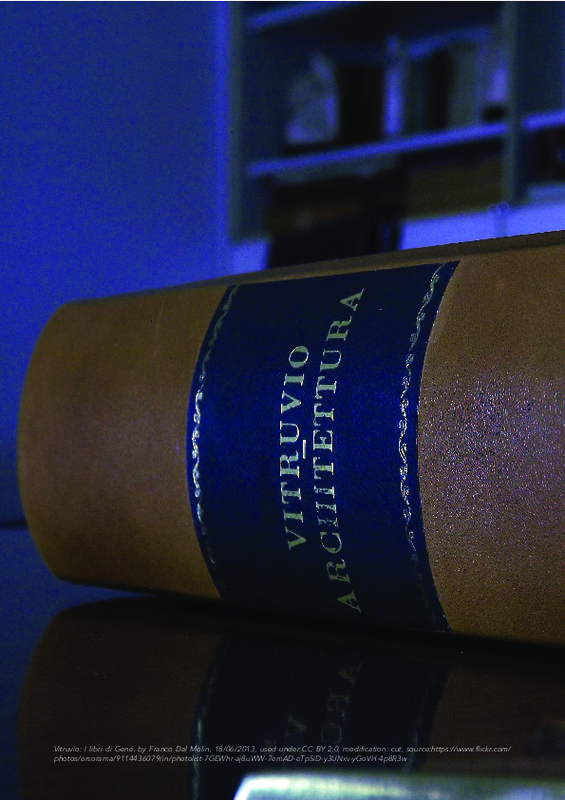JavaScript is disabled for your browser. Some features of this site may not work without it.
Buscar en RiuNet
Listar
Mi cuenta
Estadísticas
Ayuda RiuNet
Admin. UPV
The architectural design in time of crisis. A research of "roots" to support the development
Mostrar el registro sencillo del ítem
Ficheros en el ítem
| dc.contributor.author | Forlani, Maria Cristina
|
es_ES |
| dc.date.accessioned | 2016-09-07T11:15:17Z | |
| dc.date.available | 2016-09-07T11:15:17Z | |
| dc.date.issued | 2015-12-29 | |
| dc.identifier.uri | http://hdl.handle.net/10251/68988 | |
| dc.description.abstract | [EN] Vitruvius wrote the first treatise of Architecture and in it we find the fundamental recommendations for a good design. In the past 50 years it seems, instead, that each of these directions had been lost and there is today the need of promoting a new design paradigm that is attentive to nowadays criticalities and directed to sustainable development.The term sustainability starts to configure the quality of human actions since the 80’s following reflections on the resources limit (raw materials and fossil fuels) and the environment capacity limit of absorbing emissions and waste.The concept of sustainable development was elaborated in 1987 in the Brundtland report according to the need of distinguishing it from the concept of growth, that is to say with the goal of tending simultaneously toward the quality verification of programs in the environmental, social and economic dimensions.All that invited the whole society to reconsider its "lifestyle" that, in the specific field of architecture, meant finding a new design approach geared to a lower consumption and greater caution and responsibility in the choices.The configuration of a new design paradigm can trace their roots in the study of history and can proceed to evaluate the actions in a broad context of skills to ensure the quality of the products. | es_ES |
| dc.language | Inglés | es_ES |
| dc.publisher | Universitat Politècnica de València | |
| dc.relation.ispartof | VITRUVIO - International Journal of Architectural Technology and Sustainability | |
| dc.rights | Reconocimiento - No comercial (by-nc) | es_ES |
| dc.subject | Project culture | es_ES |
| dc.subject | Sustainability | es_ES |
| dc.subject | Evaluation | es_ES |
| dc.title | The architectural design in time of crisis. A research of "roots" to support the development | es_ES |
| dc.type | Artículo | es_ES |
| dc.date.updated | 2016-09-07T11:00:40Z | |
| dc.identifier.doi | 10.4995/vitruvio-ijats.2015.4471 | es_ES |
| dc.rights.accessRights | Abierto | es_ES |
| dc.description.bibliographicCitation | Forlani, MC. (2015). The architectural design in time of crisis. A research of "roots" to support the development. VITRUVIO - International Journal of Architectural Technology and Sustainability. (1):1-12. https://doi.org/10.4995/vitruvio-ijats.2015.4471 | es_ES |
| dc.description.accrualMethod | SWORD | es_ES |
| dc.relation.publisherversion | https://doi.org/10.4995/vitruvio-ijats.2015.4471 | es_ES |
| dc.description.upvformatpinicio | 1 | es_ES |
| dc.description.upvformatpfin | 12 | es_ES |
| dc.type.version | info:eu-repo/semantics/publishedVersion | es_ES |
| dc.description.issue | 1 | |
| dc.identifier.eissn | 2444-9091 | |
| dc.description.references | Bevilacqua, P. (1996), Ambiente, economia, risorse in Italia, Donzelli, Roma | es_ES |
| dc.description.references | Bevilacqua, P. (2006), La terra è finita, breve storia dell'ambiente,Editori Laterza, Bari | es_ES |
| dc.description.references | Bocchi, S. (2015), Zolle, Raffaello Cortina Editore, Milano | es_ES |
| dc.description.references | Butera F. (2007), Dalla caverna alla casa ecologica, Edizioni Ambiente, Milano | es_ES |
| dc.description.references | Carson, R. (1962), Silent spring, Houghton Mifflin, Boston | es_ES |
| dc.description.references | Davey, N. (1965), Storia del materiale da costruzione, Il Saggiatore, Milano | es_ES |
| dc.description.references | Donolo, C. (2007), Sostenere lo sviluppo, ragioni e speranze oltre la crescita, Mondadori, Milano | es_ES |
| dc.description.references | Emery, N. (2007), L'architettura difficile, filosofia del costruire, Christian Marinotti Edizioni, Milano | es_ES |
| dc.description.references | Florian, G. (1978), (interpretazione a cura di) Vitruvio Pollione - Dell'architettura, Giardini Editori e Stampatori, Pisa | es_ES |
| dc.description.references | Forlani, M. C. (2001), Costruzione e uso della terra, Maggioli Editore, Rimini | es_ES |
| dc.description.references | Forlani M.C. (2010), Cultura tecnologica e progetto sostenibile, Alinea Editrice, Firenze | es_ES |
| dc.description.references | Friedman Y. (1978), L'Architecture de survie, Casterman, Tournai | es_ES |
| dc.description.references | Gangemi V. (1985), Architettura e tecnologia appropriata, Franco Angeli, Milano | es_ES |
| dc.description.references | Hopkins R. (2009), The Transition handbook, Green Books LTD, Totnes, Devon | es_ES |
| dc.description.references | Illich I. (1973), Tools for Conviviality, Seuil, Paris | es_ES |
| dc.description.references | Norberg-Schulz, C. (1979), Genius loci, Gruppo Editoriale Electa, Milano | es_ES |
| dc.description.references | Odum, E. P. (1983), Basic Ecology, Saunders, Philadelphia | es_ES |
| dc.description.references | Raiteri R. (2014), Progettare progettisti, un paradigma della formazione contemporanea, Quodlibet, Macerata | es_ES |
| dc.description.references | Ruzzenenti M. (2011), L'autarchia verde, Jaca Book, Milano | es_ES |
| dc.description.references | Sinopoli, N. (1997), La tecnologia invisibile. Il Processo di produzione dell'architettura e le sue regie, Franco Angeli, Milano | es_ES |
| dc.description.references | Spadolini, P. (1974), Design e Progettazione, Edizioni Luigi Parma, Bologna | es_ES |
| dc.description.references | Tiezzi, E. (1992), Tempi storici, tempi biologici, Garzanti, Milano | es_ES |








